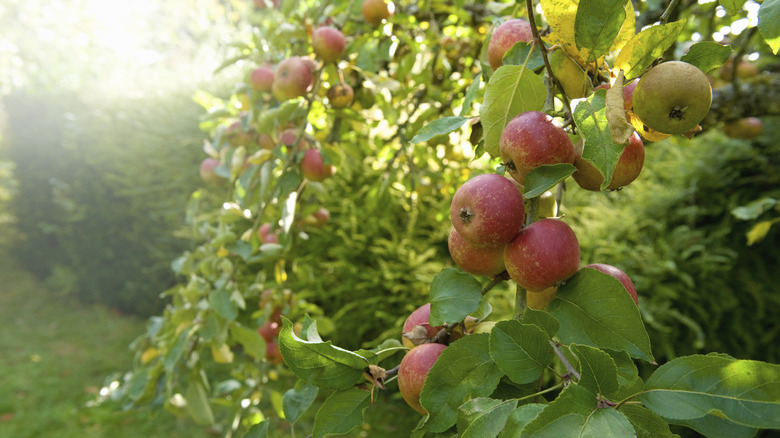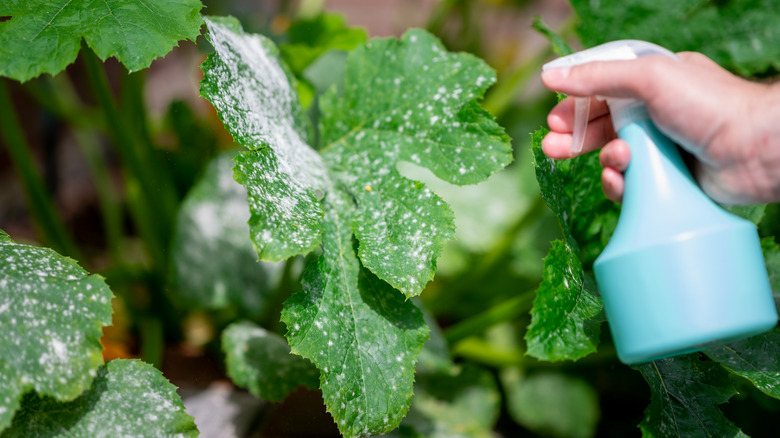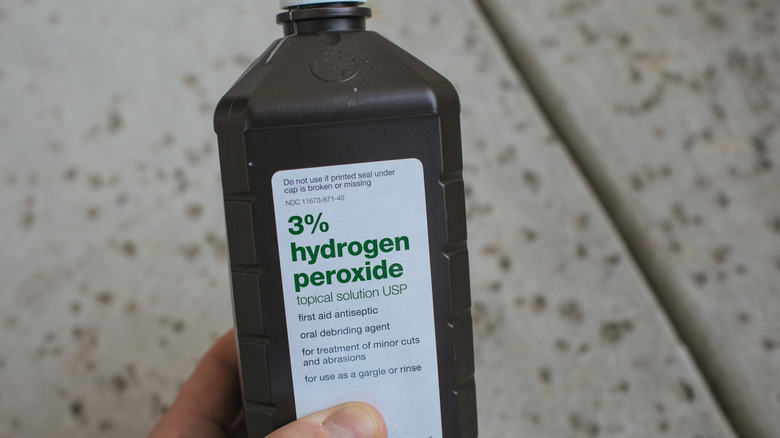The Hydrogen Peroxide Hack People Use When Growing Fruit Trees (& Should You Try It?)
Picture this: You're walking through your fruit orchard (or, okay, one or two trees), counting down the days it will take those vivid clusters to ripen, gearing up to use tips and tricks to prevent birds from munching on your garden fruit before you do. Yet, the day never arrives because something else beat both of you to the fruit: pathogens. If the ubiquitous gardening advice that's relentlessly making waves on TikTok and Instagram is anything to go by, it's time to break out the 3% hydrogen peroxide bottle lying in your bathroom cabinet. The recipe? Dilute 1 tablespoon of peroxide in 1 gallon of water — or so goes the common refrain, disregarding the myriad other variations — and apply it liberally to the aggrieved body parts of your fruit trees.
However, this is not a cure-all and it may not even be worth it for you to try. The odd-smelling, colorless liquid that the peroxide bottle holds can give fungal and bacterial microbes a run for their spot, or at least that's what you would gather from its EPA registration. Hydrogen peroxide is recognized as an organic fungicide to combat plant diseases. Naturally, a plethora of plant enthusiasts, and especially fruit tree growers, have started parroting hydrogen peroxide as the end-all, know-all tincture for any and every plant disease ever to exist. But the bubbly solution isn't truly an elixir, and may be more of a fizzle.
Should you treat your fruit trees to hydrogen peroxide?
Hydrogen peroxide's judicious use (and advocacy) to disinfect lawn and garden tools applied recently to diseased limbs surely gives it some credence as an antibacterial and fungicidal agent. Michigan State University found that some apple growers resort to hydrogen peroxide to minimize the chances of fire blight pathogens entering their harvest after it has taken a severe hail beating. Similarly, several grapevine and stone fruit cultivators rely on diluted hydrogen peroxide to control powdery mildew and brown rot, respectively. However, this H2O2 solution isn't the best tool in their arsenal — or one that's used much at all.
Generally, fungicides must offer both eradicative and preventative benefits, and while hydrogen peroxide offers the former to an extent, its quick dissipation and a lack of residual value do little to keep the diseases from returning, calling for follow-up preventative applications. Not to mention, the pallid fungicide works only when it has successfully come into contact with the diseased area after generous and repeated applications — every five days or sooner when it rains — to achieve a moderate modicum of success at disease abatement. Furthermore, hydrogen peroxide's prowess is relatively nonexistent when tackling yellow shoot disease, or Huanglongbing (HLB), a common disease you should know about before growing lemon trees. A similar subpar performance also goes for trees struggling with downy mildew.
Other insights on hydrogen peroxide and possible alternatives
The main trouble with hydrogen peroxide is that its formula dissolves quickly, giving it limited time to work its magic. This means, when fruit tree diseases are merely cosmetic, the mixture has no trouble sending bacteria and fungal spores back to their proverbial graveyards. But if they've settled tissue-deep, its chances of any decent rebuttal are zilch, as the formula can never penetrate into the plant materials. Worse, the constant splashes from rain, irrigation, or storms ensure the pathogens will keep re-attempting infiltration. By time you break out the peroxide, it's too late.
Lathering hydrogen peroxide on thick is not the solution either, because if your concentration is too strong or you apply it too often, your foliage will suffer a fungicidal burn or even dry down and wither completely. Worse, you're likely to harm the beneficial microbes inhabiting your soil in case the formula drips down that far. Moreover, hydrogen peroxide applications are ill-advised when bees are busy pollinating.
That being said, what should you do when fruit tree diseases ruin your labor of love? Horticultural oils and sulfur compounds are often your safest bets, but ensure that the product you pick caters to the specific disease afflicting your fruit trees. Further on, prevention and good cultural practices, such as growing disease-resistant varieties, regular pruning, timely watering, and no overcrowding, are key.


